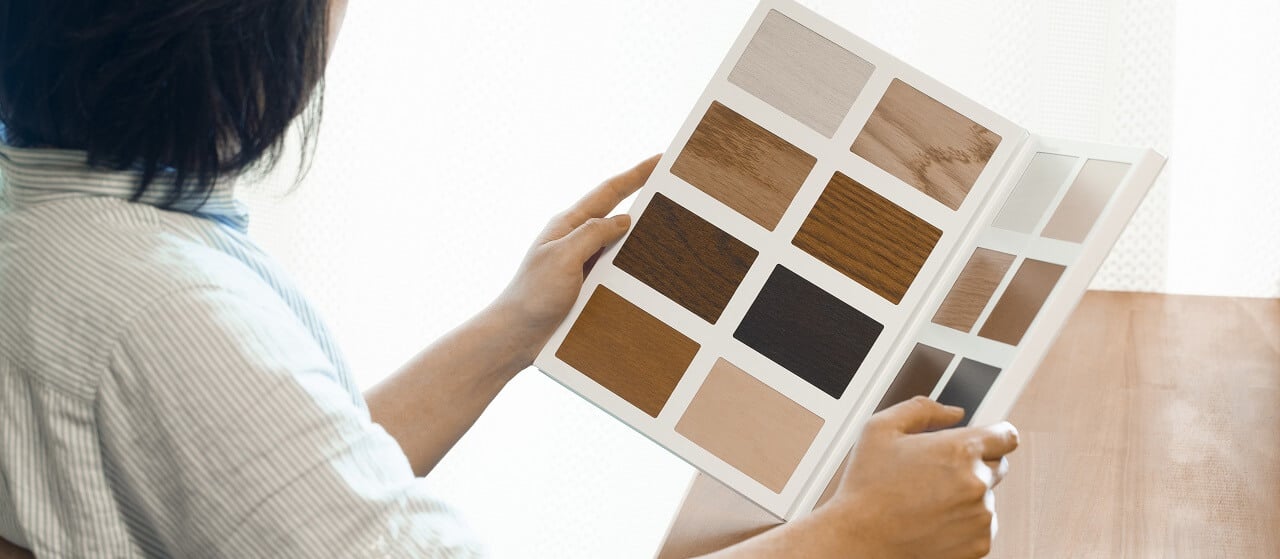
Updated: November 20, 2020
Your choice of flooring is one of the most important decisions you have to make when it comes to improving your home. The material is an integral part of your interior design. It also determines use, difficulty of installation and maintenance. Before you select, it’s wise to educate yourself on what’s available as well as the benefits and drawbacks of each.
On This Page:
- How to Choose Flooring
- Types of Flooring Materials
- Flooring Comparison
- Best Flooring Options for Every Room
- FAQs
How to Choose Flooring
To choose flooring, it’s best to start by determining what you need. Consider these factors:
- Room: Some types, like carpet or hardwood, aren’t ideal for every space
- Family Situation: Young children or pets need spill-proof and scratch-resistant flooring
- Budget: Price varies widely, so you need to know what you can afford
- Installation Requirements: Some materials need an underlayment or pad, which may cost extra
- Style: Certain types work better than others to create the right aesthetic
- Return on Investment (ROI): Higher cost or quality often means a better long-term investment
Types of Flooring Materials
There are six popular flooring materials used in residential homes, from classic hardwood to eco-friendly laminate. Additionally, there are several other lesser-used types that come with their own benefits. Use the below guide to choose which type or types are best for your space.
1. Hardwood Flooring
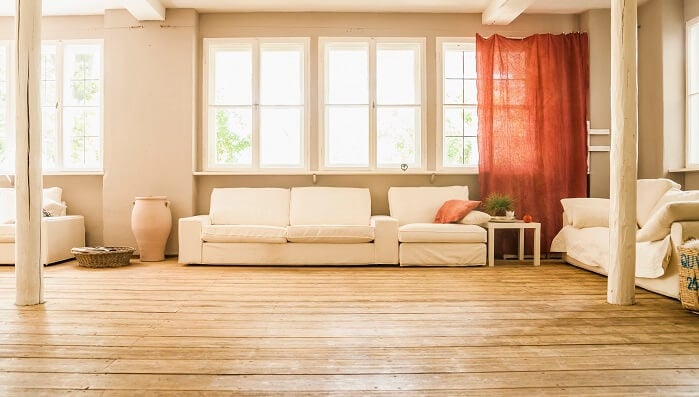
Hardwood continues to be the top choice for its great appearance and long-term ROI.
Pros:
- popular for its visually appeal
- many varietals available to vary color and style
- high ROI
- can be resurfaced every 3-5 years
- best for shared living spaces
Cons:
- expensive compared to other top flooring materials
- can develop scrapes, scratches and dents over time
- can incur moisture damage
The cost to install wood flooring averages between $6 and $12 per square foot for labor and materials, but can run much higher depending on the wood and design chosen. Refinishing hardwood flooring costs $3 to $8 per square foot.
Get the Best Wood Flooring for Your Home2. Laminate Flooring
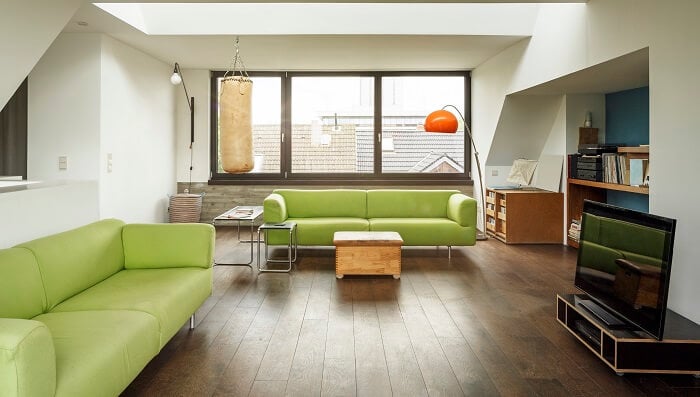
Their are several pros and cons of laminate flooring to consider when researching this material.
Pros:
- lower price than hardwood
- ease of installation
- durability
- variety of colors and styles, like natural wood
- good for high-traffic areas
Cons:
- prone to moisture damage
- difficult to repair
- not ideal for kitchens or bathrooms
The total cost to install laminate floors averages between $2.70 and $10 per square foot.
Get Help Choosing Between Wood and Laminate3. Vinyl or Linoleum
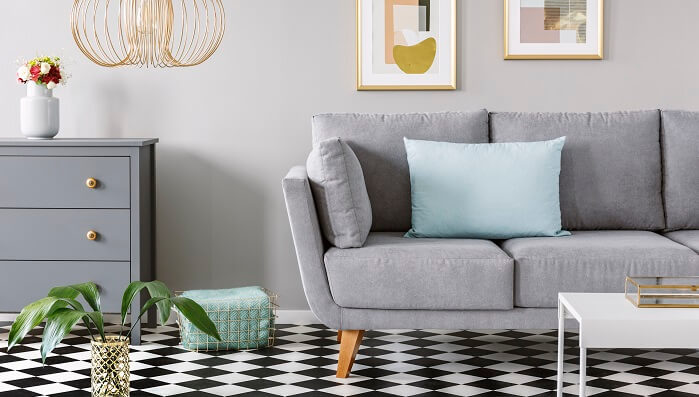
Vinyl flooring is not the cheap-looking alternative it used to be. These days, this synthetic flooring for the home is durable and effectively mimic wood, ceramic and stone.
Pros:
- affordable
- versatile
- great for high-traffic areas
- easy to maintain
- DIY installation possible
Cons:
- lower ROI vs. wood or laminate
- less popular due to appearance
The cost to professionally install vinyl or linoleum flooring ranges from $3.50 to $15 per square foot.
Choosing between Vinyl and Linoleum?4. Porcelain or Ceramic Tile Flooring
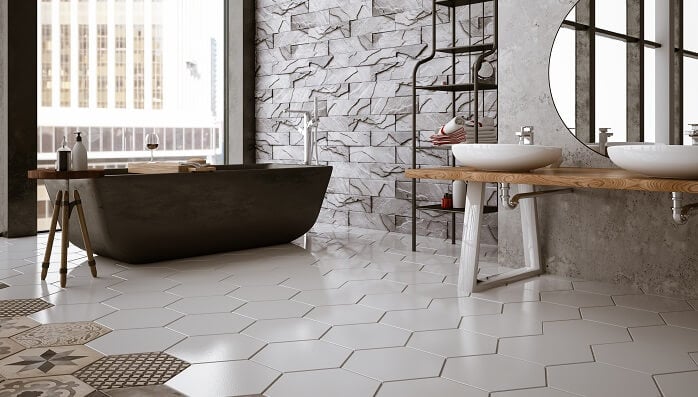
Ceramic and porcelain tile flooring are beautiful options for high-traffic and moisture-prone areas in the home.
Pros:
- come in a variety of looks and designs
- durable
- non-porous or waterproof
- great for kitchens, bathrooms and entryways
Cons:
- one of the most expensive options
- difficult to install
- can chip and scratch under heavy use
The cost of installing a ceramic or porcelain tile floor depends on the type of tile chosen, but averages $13.50 to $83 per square foot.
Compare Quotes For Your Floor Tiling Project5. Natural Stone Tile Flooring
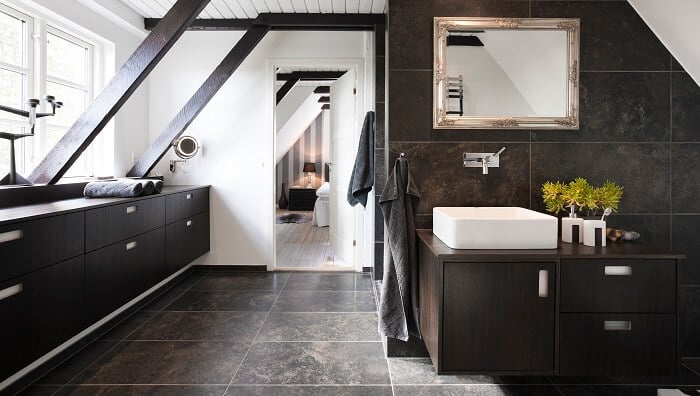
Natural stone tile is a classic flooring option that includes granite, marble, travertine and sandstone. Some materials, like travertine, are more durable than others. Keep in mind that finishes require different amounts of care. A polished marble surface will show scratches and scuffs more easily than a tumbled one, for example.
Pros:
- durable
- insulated for warmth
- comes in many styles, colors and shapes
- great for radiant heating
- eco friendly
- good for homes with kids and/or pets
Cons:
- one of the most expensive options
- can easily chip or scratch
- some stone tile types are porous
- expensive repairs
Due to the difficulty of the project and weight of the tile, it’s best to hire a stone floor installation professional. The cost to install a natural stone floor averages most homeowners between $800 and $3,000 for materials and labor.
Get Help Choosing the Right Stone For Your Floor6. Carpet
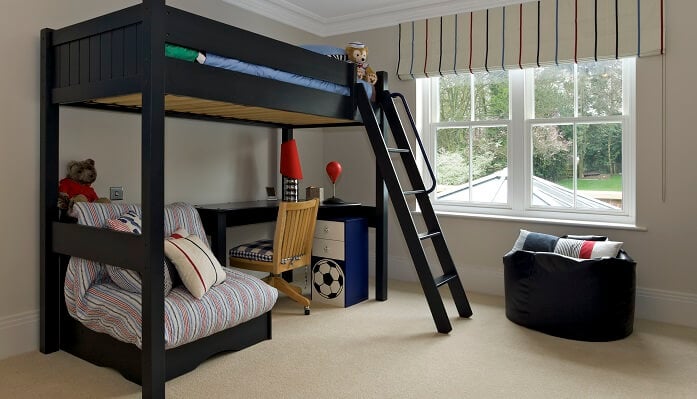
Carpet remains a favorite for many homeowners, especially for bedrooms.
Pros:
- cost-effective
- soft and warm on feet
- multiple colors and designs available
- great for soundproofing
- stain-resistant varieties exist
Cons:
- difficult to maintain – professional cleaning recommended at least once a year
- can absorb smells
- not great for homes with pets
- not recommended for moisture-prone areas: kitchen, bathroom
Carpet installation costs $3.50 to $11 per square foot, making it one of the cheapest materials. The expense to install a carpet pad averages $3.75 per square foot.
Get Carpeting Professionally InstalledNew or Alternative Flooring Ideas
If you’re looking for unique flooring materials that look great or have extra benefits like sustainability, consider these other types:
- Rubber:
- poured material
- non-slip surface
- cost of rubber flooring: $4-$12 per square foot
- great for the kitchen, indoor gym or play area
- Parquet:
- wood pieces arranged in a mosaic pattern
- usually costs more than other wood styles
- great for formal spaces
- Terrazzo:
- composite made of natural stone chips and resin
- dazzling design
- price of terrazzo flooring: $25-$90 per square foot
- works well indoors and outdoors, depending on the style.
- Marmoleum:
- sustainable vinyl alternative
- custom construction
- Marmoleum flooring costs: $3.25-$9 per square foot
- great for bathrooms and kitchens
- Bamboo:
- eco-friendly and wood-like
- moisture resistant
- price to install bamboo flooring: $5.50-$12 per square foot
- better for kitchens and decks than most woods
- Cork:
- low VOCs
- fire-resistant
- sound-blocking
- cost of cork floors: $5-$14 per square foot
- best for quiet areas
Flooring Comparison
Wondering which flooring is right for your home? There’s often more than one right answer when comparing factors like durability, comfort and style. Determine the most important factors for you to narrow down your choices of the best material or materials for your space.
To find the perfect flooring material, you may also need to compare the finer details of two types, such as:
- Carpet vs. Hardwood
- Hardwood vs. Laminate
- Porcelain vs. Ceramic Tile
- Engineered Hardwood vs. Laminate
- Vinyl vs. Laminate
Most Durable Flooring
The most durable hard flooring types are:
- bamboo
- travertine
- vinyl sheet
Best Type of Flooring for Dogs, Cats or Other Pets
The ideal flooring for pets is non-slip porcelain or stone tile. This waterproof surface is less likely to scratch or wear underfoot.
Best Whole House Flooring
If you’re installing the same flooring for the whole house, you’ll probably want solid hardwood or tile. These materials work well in most rooms.
Best Eco-Friendly or Sustainable Flooring Materials
The best recycled flooring materials are bamboo and cork. Cork also provides additional insulation with an R-value about 1.125, the highest of indoor hard surfaces.
Best DIY Floor Coverings
The best DIY option is a floating floor in vinyl or engineered hardwood.
Top Non-Porous Floors
Flooring types with a waterproof, non-porous surface include:
- porcelain or ceramic tile
- vinyl
- concrete
Easiest to Install or Maintain
Vinyl plank or sheet is the easiest to install or maintain. All you need to do is sweep it regularly and mop on occasion.
Cheapest Type
With prices running as low as $0.75 per square foot for materials, the cheapest flooring types are vinyl or carpet.
Prettiest Flooring
The prettiest flooring has a lot of character and comes in hardwood, natural stone tile or terrazzo.
Best Old Flooring Types
If you need to match old flooring in a home, look for solid hardwood or natural stone tile. These styles have been popular for centuries.
Fire-Resistant Flooring
The flooring types most likely to resist fire are stone or porcelain tile. They don’t burn or melt except at very high temperatures.
Top Material for Soundproofing
Cork or carpet are ideal options for soundproofing. Many homeowners prefer this for rooms like a young child’s play area or recording studio.
Find the best material for your floorBest Flooring for Radiant Heat
The best flooring for radiant heating has a thickness of 0.375 inches to 0.5 inches in these materials:
- natural stone tile
- ceramic or porcelain
- laminate
- engineered hardwood
Most Resilient for Kids
The most resilient flooring for kids is carpet or vinyl. Children are more likely to spill or scratch surfaces, and these products can be easier to maintain.
Top Flooring for Elderly or Disabled People
The best flooring for people with limited mobility is rubber or low-pile carpet. These materials are soft and non-slip.
Best for Resale Value
Hardwood or tile are the ideal flooring choices for resale value. Hardwood in particular can have an ROI as much as 70% to 80%.
Top Non-Slip Industrial or Commercial Flooring
The best non-slip industrial or commercial flooring includes:
- carpet with low loops
- laminate
- concrete with an epoxy coating
Best Types of Floating Floors
a floating floor is one where the boards are not nailed or glued to the subflooring beneath it. Laminate is the most popular floating floor material, but other planks can be used. Floating floor materials are durable and relatively easy to install.
- Laminate
- Engineered hardwood
- Vinyl plank
Best Flooring Options for Every Room
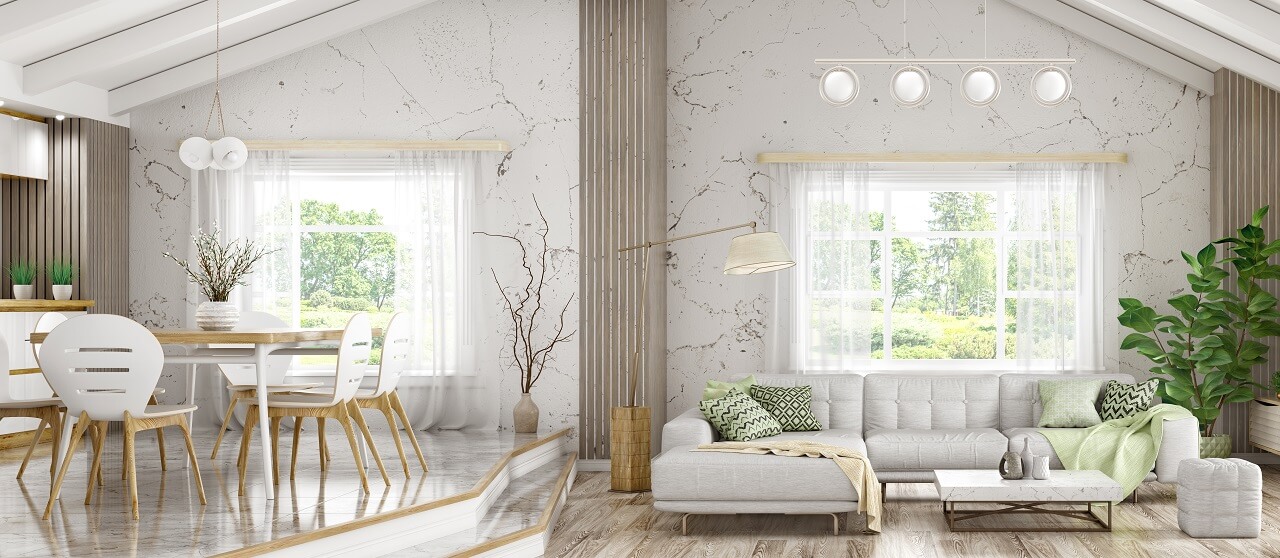
Bathroom or Kitchen Flooring
The best flooring for bathrooms or kitchens is tile or vinyl. These materials also go well in the mudroom.
Living Room Flooring: Hardwood or Carpet
Hardwood or carpet are the best flooring choices for the living room. They offer comfort and style without compromising durability.
Dens or Family Room Flooring Ideas
When you choose flooring for the den or family room, consider vinyl or carpet. These provide an ideal balance of comfort and durability.
Durable Entryway or Foyer Flooring
Tile or vinyl are the most durable flooring options for entryways and foyers. They are waterproof and scratch resistant.
Best Kinds of Flooring for Laundry Rooms
The best flooring for laundry rooms are vinyl or tile. These types can handle higher humidity and spills without warping or bleaching.
Best Floor for Stairs or Hallways
Carpet or hardwood are the most appropriate choices for stairs and hallways because they are easier to cut to unusual sizes.
Good Flooring for Bedrooms: Carpet or Cork
Good flooring for bedrooms is a soft and warm material like carpet or cork.
Offices
Laminate and low-pile carpet make great options for home offices. They are durable, stain-resistant and ideal for high-traffic.
Basement Floors
The best basement flooring types are tile, laminate or engineered hardwood. These materials handle higher moisture better than hardwood and can be installed on a concrete subfloor.
Garage Floors
The best option for this room is concrete. Installing garage floor coatings or garage tiles helps provide a non-slip surface that is easy to clean.
Outbuildings: Barn and Shed Flooring
The most durable flooring options for outbuildings are concrete or pressure-treated wood. These materials are moisture-resistant and hardy in hot or cold weather.
Outdoor Flooring Types
If you need to install outdoor flooring, your best bet depends on location:
- Deck: Pressure-treated wood for price and selection
- Patio or Driveway: Concrete for durability
- Covered Porch: Indoor/outdoor carpet for comfort
FAQs
Where’s the best place to buy flooring?
The best place to buy flooring is from local or national flooring contractors near you. These companies usually have reliable service and a good inventory. They may also be able to get better prices on materials than homeowners.
When’s the best time of year to buy floors?
The best time to buy flooring is early winter and late spring. These months avoid the fall and summer rush, which mean you can get better deals and quick installation.
How many different types of floors can I put in a room?
You can put as many different types of flooring in a room as you like, as long as you put transitions between them. Most people prefer one or two.
How can you tell which kind of flooring you have?
If you’re not sure which kind of flooring you have, look at pictures online to get a sense. If it’s still unclear, take a photo to a local installer for more information.
What’s a good type of floor molding, trim or transition?
Solid wood is the highest-quality and most-durable material for molding, trim or transition.
Hire a Local Flooring Contractor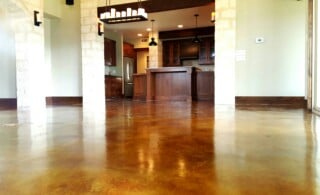 Concrete Flooring – Solid as a Rock
Concrete Flooring – Solid as a Rock 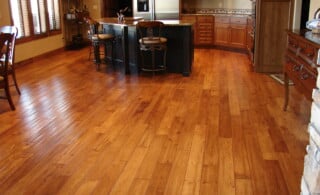 Cypress and Hickory Wood Flooring
Cypress and Hickory Wood Flooring 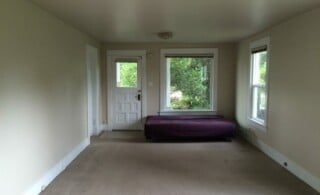 How to Hide Pesky Carpet Seams
How to Hide Pesky Carpet Seams 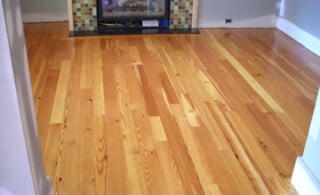 Divine Pine Flooring
Divine Pine Flooring 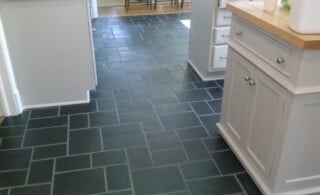 Slate Floors Make for a Great Decor
Slate Floors Make for a Great Decor 

A growing number of customers are leaning toward Vinyl. The quality, durability and realistic look & texture of the newer vinyl planks is simply amazing. It seems there’s this stigma associated with the term ‘vinyl’ because of the older types (think linoleum). They really should have came up with a new name for these “new tech” planks.
I have a laminate wood floor but under that I have granite. I’m wondering if removing the wood floor and keeping just the granite will increase my home value.